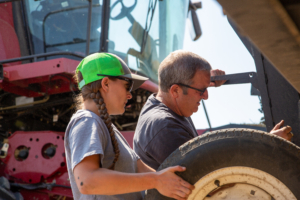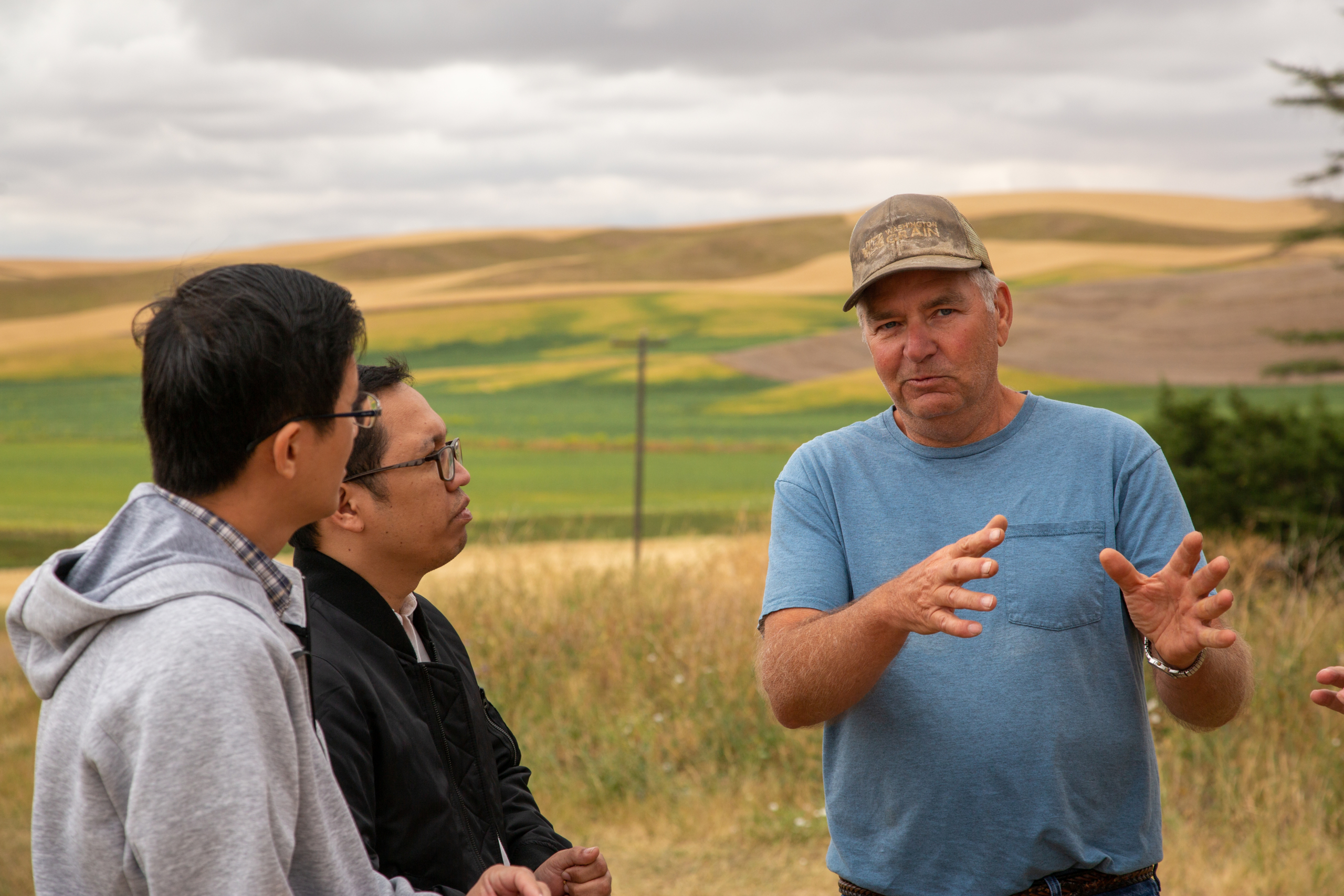Stories of Stewardship: Preserving Productive Soil in Washington State
Whitman County in eastern Washington State is the most productive wheat-producing county in the United States. There, near the town of St. John in “The Palouse,” the Bailey family has grown winter and spring soft white and club wheat and barley for three generations.

Erin Bailey and Mark Bailey farm with Mark’s brother Gary in eastern Washington’s Palouse country. “It is my responsibility to [farm] sustainably to provide for the next generations of our family,” Erin said.
“Whitman County has deep, fertile soils and adequate rainfall to produce a great dryland wheat crop,” Gary said. “And we want to keep it around for the next generation. So, we are doing whatever we can to maintain that soil base and, in fact, to improve it.”
Reducing Environmental Impact
According to the Washington Grain Commission, over many generations, wheat farmers in the state have embraced stewardship and successfully reduced their environmental footprint while remaining highly productive. The adoption of no-tillage and reduced tillage equipment and systems has helped them dramatically reduce soil erosion. Precision technology has helped reduce the volume of crop protection inputs needed to ensure wholesome and productive crops.
“Protecting our farmland is one of the major challenges we face,” said Mark Bailey. “So we have to continually change the ways we grow wheat and other crops and do the best job we can to keep those resources for the next generation and the next.”
Learn More
Gary, Mark, and Erin Bailey shared more about preserving their land and growing safe, wholesome wheat for their family and the world in the following video story produced in 2020.
U.S. Wheat Associates (USW) is reaching out to wheat farmers across the United States to learn how they strive to improve their land and manage resources. Each is committed to adapting to the many challenges they face and making choices that are best for the environment, their individual farms, and their customers. We are proud to share their “Stories of Stewardship.”


